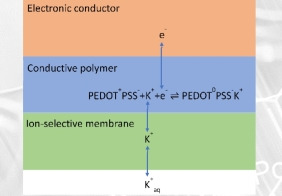Naujienos ir renginiai
- Titulinis
- Naujienos ir renginiai
- Naujienos
Naujienos
Elektrocheminės medžiagotyros seminaras. Davit Tediashvili
Elektrocheminės medžiagotyros seminaras:
Solid-contact Ion-selective Electrodes
Davit Tediashvili (University of Tartu / Åbo Akademi University, Estija / Suomija)
In the last few decades, there has been a rapid development of chemical sensors. The main driving force for this development is attractive properties of these devices, such as their price, simplicity of operation and fast response. However, one of the main limitations in potentiometric chemical sensors is an internal filling solution. This element serves as a signal transducer in a device, converting an ionic signal into an electronic one, which is recorded afterward. Even though this transduction is well studied and known to be efficient, presence of liquid is still undesirable. Water is prone to evaporation, can lead to unstable signals, which limits sensor’s application in remote sensing. Another emerging trend is towards miniaturized devices, and liquid can cause some problems in this area as well. Numerous attempts were made to eliminate liquid altogether, however, results obtained showed that some intermediate layer with mixed ionic and electronic conductivity is essential for stable signal. One of the most promising approaches is to use conductive polymer as an ion-to-electron signal transducer. They offer high stability, low manufacturing costs and with enough redox capacity, they can serve as efficient signal transducers. One of the notable ones is poly(3,4-ethylenedioxythiophene) (PEDOT) which offers very high stability and efficient signal transduction. Electrodes with highly reproducible slopes (close to theoretical 59.2 mv/decade) are already made, however, producing ones with high standard potential stability is the main challenge.
2019-11-07 16:00 / NFTMC Saulėtekio al. 3, E302
